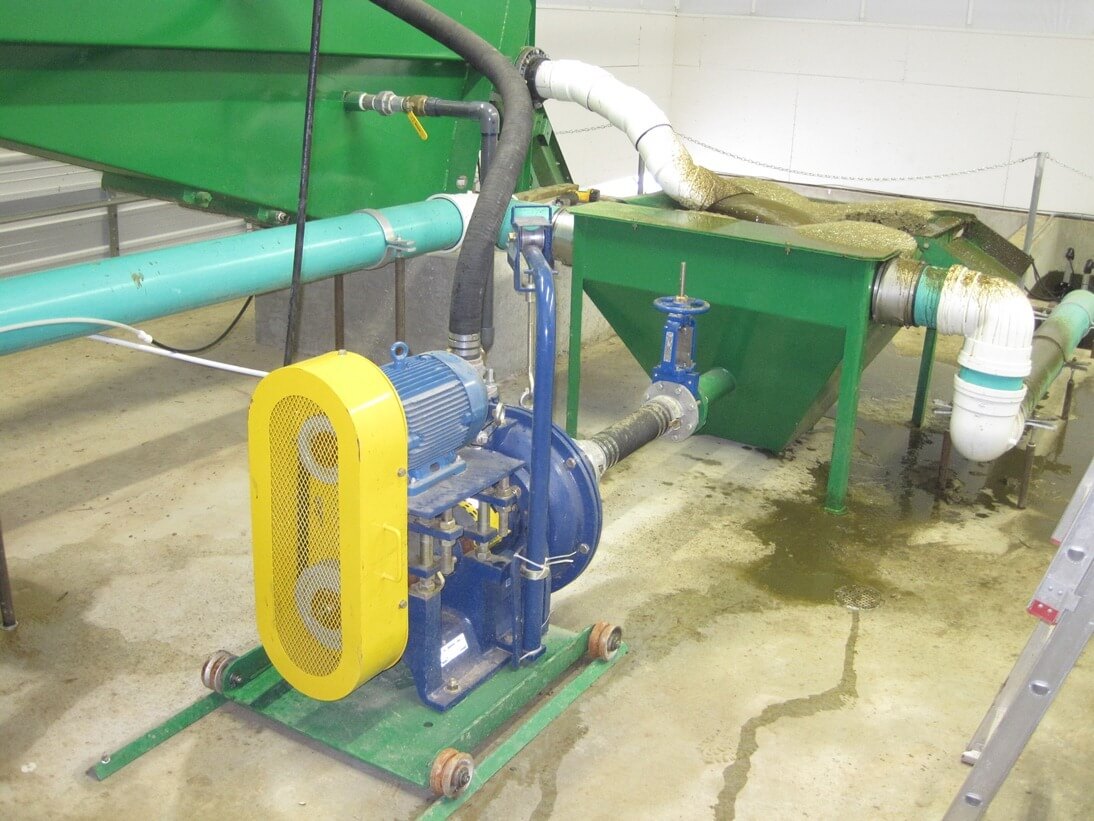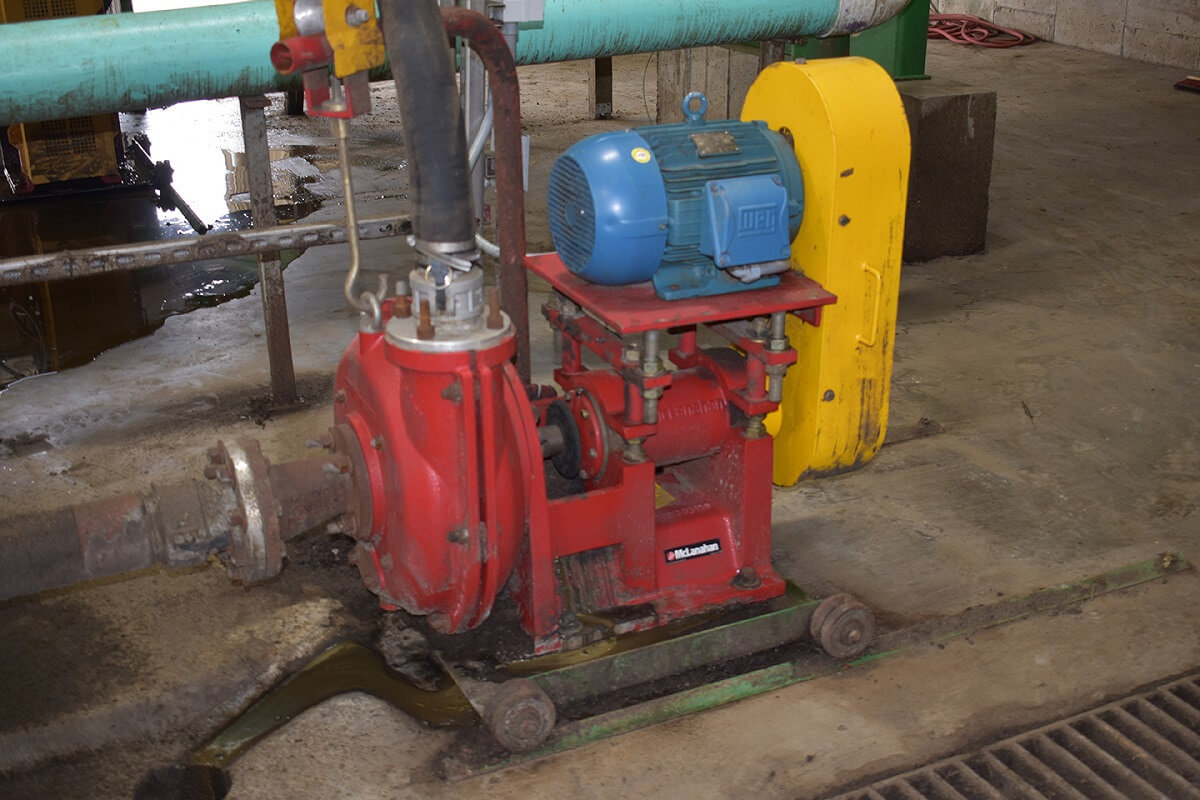Sand-Laden Manure Pumps
McLanahan’s rubber-lined, centrifugal sand pumps are engineered from existing mining-duty technology, meaning they are designed and built to handle the abrasiveness of pumping sand-laden manure.







McLanahan’s rubber-lined, centrifugal sand pumps are engineered from existing mining-duty technology, meaning they are designed and built to handle the abrasiveness of pumping sand-laden manure.







Jump To:
McLanahan centrifugal sand pumps are built for pumping dilute liquids containing abrasive materials. This is often diluted sand and manure, but it can be used in other applications, such as aggregate and mineral processing.
These pumps excel at pumping diluted sand-laden manure (less than 6 percent total solids) and can be used in both flush and flush-flume conveyance systems. Rubber-lined impellers and casings provide long intervals between servicing. They are available in a wide range of sizes and horsepower to meet the needs of many different pumping applications.
This pump operates under the same principles as most centrifugal pumps. Rotational movement of the pump shaft and impeller convert electrical energy to fluid energy within the pump. Low pressure areas at the suction pull the fluid into the impeller eye. The rotation of the impeller causes the fluid to move radially outward. It also creates a high-pressure area at the pump outlet, forcing the liquid out of the pump. This action continues and constant fluid flow into and out of the pump is achieved.
Specific fluid flow and pressure is created by adjusting the pump shaft speed. This can be done with changes to the belts and sheaves or by the use of a VFD. These pumps are designed for abrasive slurries. One of the design elements involves generous tolerances between the impeller and housing. These generous tolerances minimize abrasion but can limit the use and application of the pump.
McLanahan engineers will ensure the proper pump is selected and proper operating speeds are chosen to get the most efficient pumping system available.
McLanahan designs and builds a wide range of pumps specifically for pumping abrasive slurries like sand-laden manure. These severe pumping applications normally cause excessive wear on the wetted components within the pump, such as the impeller, casings and seal. Wetted components in the McLanahan Sand-Laden Manure Pump are covered with a rubber coating to prevent excessive wear. The split casings are protected by bolted-in-place rubber liners, which can be replaced by splitting the pump casing. Worn liners can be unbolted and removed so new liners can be installed. The rubber-lined impeller can be supplied as a closed vane, which is the most efficient, or more commonly as a vortex-style capable of passing large debris. The ceramic/rubber seal requires no external water supply for lubrication. OSHA compliant guards provide protection from moving parts.
McLanahan employs a team of pump experts to ensure the pump is sized and selected properly. Each McLanahan pump is specifically sized for the application in which it will be used. Prior to any sale, a McLanahan technical expert will assess the pumping system, taking into account the material being pumped, how far it’s being pumped, the height of the liquid that needs lifted and other system-related items. These items will be loaded into a pump sizing program to determine pump size, speed and horsepower. Along with the proper pump size, recommendations are given for the piping design to and from the pump to help ensure success.
The basic information you need to properly size a pump includes:
Once this information is known, our team will determine the proper pump size as well as make recommendations on the piping system.
Rubber is one of the best products to protect against abrasion. Several factors determine the longevity of the liners. Sand particle size and shape affect abrasion. A manufactured sand with sharp edges will abrade the rubber faster than a round, smooth river sand. Also, pump speed affects wear. Operating the pump at a lower speed will help to minimize wear. Pump liners last longer than seals and impellers and are one of the last items to replace.
Charging a flume system with process water involves high volume and low head. This type of system does not suit the pump curves for a McLanahan pump and usually doesn’t work.
One of the biggest challenges with pumping dairy manure is the occasional debris that finds its way into a system. This debris can wreak havoc on a poorly designed pump and system by creating a blockage in the pump or piping. It’s important that every part of the pump system is designed to take into account this potential hazard. A vortex impeller does not create any flow restrictions into and out of the pump, therefore minimizing the potential for pump plugging.
Rubber is widely used across a range of industries to protect components against abrasive wear. Abrasion occurs as particles come in contact with a surface and transfer some of their energy into that surface. As this happens enough times, small pieces from the surface begin to come off. Holes begin to form when the surface material is completely eroded away. Rubber is effective against this erosion because it is able to absorb the energy from impinging particles while causing minimal damage to itself.
McLanahan centrifugal sand pumps are built for pumping dilute liquids containing abrasive materials.